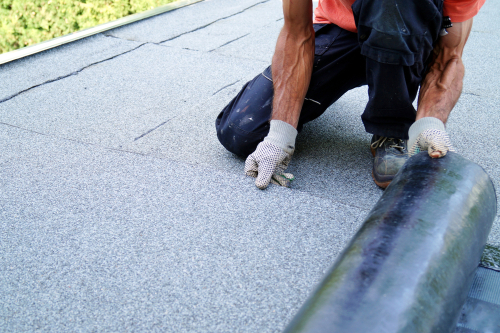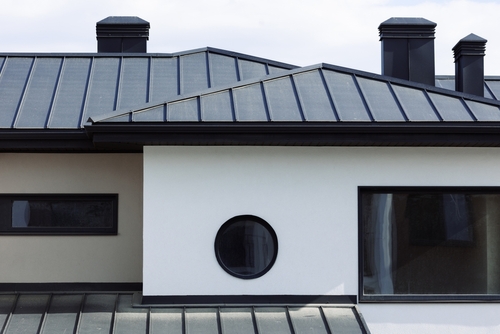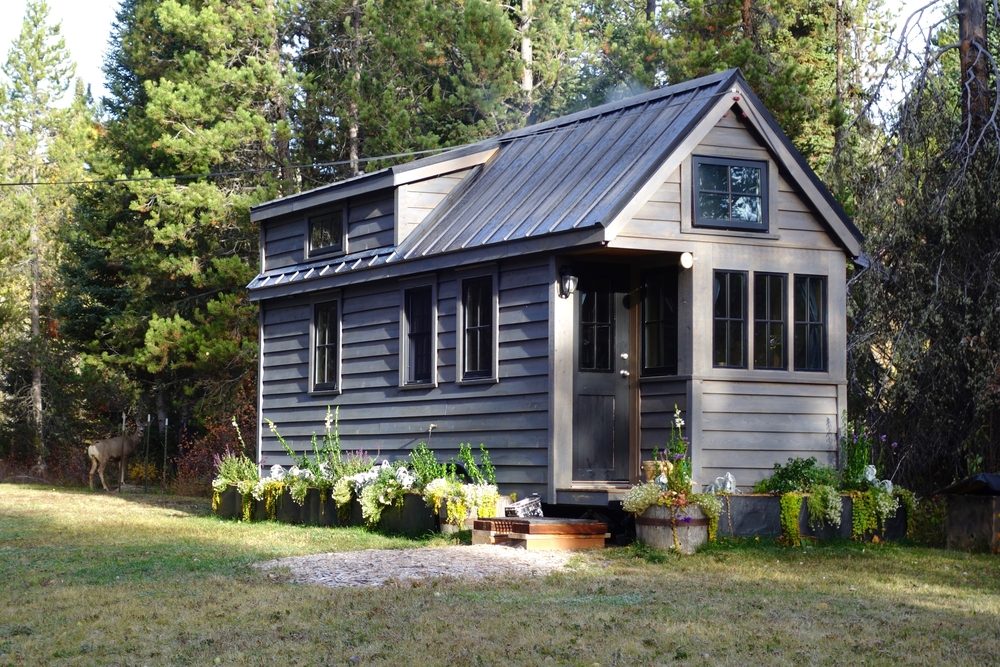A well-made roof is one of the most important elements of a newly built home. Remember that a roof protects everything under it, including wooden beams, ceilings, walls, furniture, and more. Badly installed shingles can increase your chances of developing a leak, which in turn can lead to costly repairs down the line.
Installation aside, however, you also want to get your home started off with the right kind of roof. This means choosing a suitable roof shape and using the right materials. Try to consider factors such as environment, durability, maintenance, and cost.
Tiny Home
With the price of homes and land skyrocketing in recent years, potential home buyers have come up with a new solution — tiny homes. Just like with any other home, a tiny home provides everything you need; a sleeping area, shower, and kitchen, but in a smaller, more compact space.
Aside from being relatively low-cost upfront, tiny homes also allow for greater flexibility for off grid living and customization.
Building A Tiny Home
As with any other home, however, you’ll have to build, rent, or buy your tiny home. Fortunately for all the builders out there, today we’ll go over a very important topic regarding your future tiny home — the roofing.
If you plan on living in your tiny home for any extended period of time whatsoever, you’ll definitely want a sturdy roof to protect you from the elements.
Roofing Options
Below, we’ll be going over some of the roofing options available to you, as well as their pros and cons.
Tiny Home Roof Styles
As with other homes, a roof for a tiny home can come in many different shapes and sizes. Here are some of the most common roof shapes/styles currently used.
Flat Roof

If you’ve ever seen a large commercial building like an office or department store, you’ve probably seen a flat roof. Of course, even a flat roof isn’t 100% flat; it actually has a very slight slope to it. This type of roof shape is popular for good reason — it’s easy to install and relatively cheap. In the case of a tiny home, a flat roof also allows you to maximize your ceiling space. This can be useful if you’re considering a loft type of layout.
All of these factors make this roof shape a good contender for your tiny home.
Do keep in mind, however, that a flat roof can also be prone to drainage problems, and may require frequent replacement. Ask a roofing expert whether or not this is a good solution for your home.
Shed Roof
A shed roof is somewhat comparable to a flat roof in that it’s only a single slope. The main difference between the two roofing styles is that a shed roof has a steeper slope.
Gable Roof
One of the most common roof shapes for homes in the US, gable roofs are simple and to the point. A gable roof is generally made up of two sloped sides coming to a point.
The good thing about a gable roof is that water and snow roll off it fairly easily, making it somewhat resistant to leaks. It’s also a fairly easy roofing style to implement, hence its popularity.
In terms of wind resistance, however, a gable roof performs only moderately well. This means that if you’re in a particularly windy region, you may want to consider a roofing style with more slopes.
It should also be noted that a gable roof does limit your choices when it comes to interior layout. The top of a gable roof does come to a tip, creating an “attic,” so to speak. This means that you probably won’t be able to have a spacious ceiling for a loft bed.
Hip Roof
According to an article published in the Science Daily by the New Jersey Institute of Technology, a house with a “multiple-panel roof…was found to have reduced wind loads”. This means that a hip roof might be better suited for windy regions (as opposed to a two-sloped roof).
Roofing Material
Shape aside, the second thing that will affect the durability of your roof is the type of material used. We’ve listed out of a few of the most commonly used materials below (as well as their strengths and weaknesses).
Asphalt Shingles
Probably the most common type of roof in the US, asphalt shingles are low-cost and easy to install. They’re a common choice for first-time homebuyers or those looking to stay under a budget.
Durability
Asphalt shingles can last up to 15-30 years, depending on maintenance and the type of asphalt shingle used. For example, well-maintained architectural shingles can probably last you a few more years than basic 3-tab shingles.
Metal Roofs
One of the most popular roofing materials used today, metal roofing has a variety of advantages. In addition to having great curb appeal, metal roofing is also energy efficient, eco-friendly, and long-lasting.
Metal Roofing Panels

Even metal panels come in a variety of shapes and sizes. Here at Austermiller Roofing, we typically recommend standing seam roofing. Standing seam panels have a concealed fastener system, which makes them not only more aesthetically appealing but more practical as well.
Cost
Metal roofing does tend to be a little more expensive upfront compared to asphalt shingles. This is mostly due to the fact that metal is a more high-quality material and also requires more skill to install.
Having said that, however, it’s important to look at the value of the roof overall. Metal is a much more energy-efficient material on account of the fact that it can reflect more sunlight and heat. This can lower your utility bills during the summer when you normally have to blast your A/C at full strength to keep your home cool. Not only this, but metal roofing generally requires less maintenance and repairs, which will save you some money as well. To find out which roofing material will be the best value over time, talk to one of our staff members today.
Durability
Metal offers a longer lifespan and better durability than asphalt shingles. In fact, some metal roofing can last twice as long as asphalt shingles. This means less hassle related to repairs and fewer expenses down the line.
Last Notes
Do keep in mind that a tiny home will be much smaller than the average house, however, and there may be some roofing limitations associated with that. For example, a dormer roof may require more square footage than a tiny home has. The best thing to do is consult with a roofing company and ask which type of roof suits your home.
Additionally, remember that a tiny home will still have many of the same needs as a regular-sized home. So don’t forget to inspect your roof 1-2 times a year and perform regular maintenance. This will most likely include cleaning out gutters and shoveling snow off your roof occasionally during the winter.
Roofing In Mt. Juliet
Looking for an experienced, reliable roofing company? Give us a call here at Austermiller Roofing. We have over 30 years of experience in our industry and a fantastic team. Not only are our staff good at what they do, but they also care about our clients. We know that our company is an important cornerstone of the middle Tennessee area, and we take that seriously. That’s why our roofers work hard to provide quality work that’ll last many years.
In addition to this, we also make sure to protect our client’s property from damage as much as possible. Not only are our jobs supervised, but we also take the extra step of asking homeowners to cover the items in their attic in case of dust.
Interested in learning more about our services? Simply give us a call at (615) 553-2041, or fill out our online form. We offer roof repair services, full roof replacements, leak detection, flashing installation, and much more. The best part? Austermiller Roofing offers FREE roofing estimates. This means that you don’t have to lift a finger to measure your roof; we’ll do that for you!

